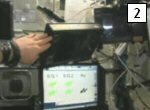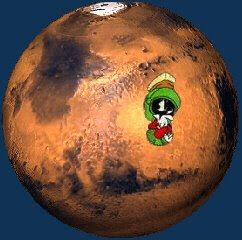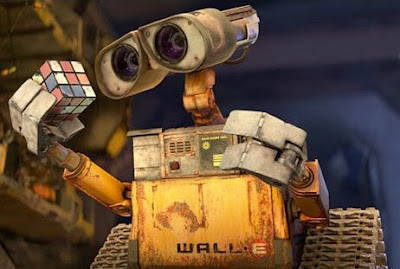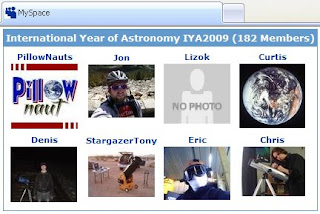Thursday, January 29, 2009
Kids - Show Don't Tell
Glad you had fun, and thanks for the feedback! If you're already taking your 5-year-old to space museums and she says she wants to be an astronaut, you don’t need my advice, LOL... the new space race is in good hands. Pretty soon, she'll be begging you to send her to Space Camp!
I'll offer a suggestion though: take her to a planetarium to view star fields and “animated” celestial events projected onto a dome. The International Planetarium Society publishes an annual list, showing nearly 1500 planetariums all over the world. Your closest is Zeiss Planetarium in St. Louis. Lucky you!
Austin is collecting funds to build one, based on studies that show planetariums improve understanding of astronomy and space concepts. I believe it, since my earliest memory of being truly awed by stars and planets was on a school field trip to Morrison Planetarium in Golden Gate Park, San Francisco. Seems odd in retrospect, since that was after my first trip to Kennedy Space Center! However, while I’m sure the rockets impressed me, I was too young to comprehend all the artifacts I saw there.
IMAX films – heck, even Star Wars movies – were still years away, so planetariums were the only places where the universe was spacious, multi-colored, spinning, alive, explosive! It doesn’t hurt that the shows are accompanied by loud, stirring symphonies – so it was definitely a powerful experience where I felt “fascinated.”
I later joined the California Academy of Sciences – where discounted planetarium tickets were perks when you paid dues. I attended laser shows, films of eclipses, meteor showers, planet documentaries, and most memorably, giant projections of the Shoemaker-Levy 9 Comet impacting Jupiter.
In this respect, I'm sure everyone could tell their own story. There are probably as many ways to become interested in space as there are people interested in space! Some swear by telescopes, others had an influential science teacher, or were deeply affected by watching Apollo coverage. (My mother was pregnant with me at the time, so I just missed it!) Maybe some saw Shuttle launches as kids, though I didn’t see one until I was nearly 30. Whatever powerful image you saw first was likely the one that stayed with you.
Monday, January 26, 2009
ISS Guided Tour
Like any good host, Mike begins by apologizing for the clutter as they "re-model," then narrates his surroundings, beginning with the 15 flags of all the participating nations. He floats through the Unity & Harmony nodes, the Japanese Kibō module, the European Space Agency's Columbus module and finally the Russian module, including the Soyuz lifeboat/vehicle.




Highlights include the resistive exercise devices, food containers, lab freezers, hatches, crew quarters, oxygen and water recovery systems, robotics, space suits, experiment stations, functional cargo block (FGB) and storage spaces, where he emphasizes that you can easily use three-dimensions in space... and indeed, the "floor" or "ceiling" become relative, as every inch seems covered!
My favorite part is where he points the camera out the window to see the robot arm and the solar arrays, as the ISS serenely passes ice bergs over the Indian Ocean. A couple times, he lets go of the camera to use both hands for a task, and you can feel it floating freely until he grasps it again. Micro-gravity! Wild! Later, Mike points out the window again to view land masses and the curvature of the planet as they orbit…
Running time is about 35 minutes. Watch with the kids!
Friday, January 23, 2009
New Year Q & A
LOL, I’ll get right on that now that he’s been sworn in. I saw on the news that a group [of people with too much time on their hands] created an OBAMETER to track 510 campaign promises made by our new commander-in-chief. No less than 18 may affect NASA:
#150: Code of Conduct for space-faring nations
#331: Re-establish National Aeronautics & Space Council
#332: Additional Space Shuttle flight
#333: Speed development of next-generation space vehicle
#334: Use private sector to improve space flight
#335: Work with international allies on ISS
#336: Partner to enhance potential of ISS
#337: Use ISS for biological + physical research
#338: Explore whether ISS can operate after 2016
#339: Support human mission to moon by 2020
#340: Robust R&D on future human/robotic missions
#341: Increase spending for longer missions [Mars, asteroids, etc]
#342: Deploy global climate change monitoring system
#343: Improve climate change data records
#345: Enhance earth mapping
#349: Support commercial access to space
#350: Revise regulations for export of aerospace technology
#351: School programs to highlight space & science achievements
I don’t see "Attend Launch" on there... so I intend to call the White House... as soon as all those rotary-dial phones get fixed ;)
Qazser says: I passed bloodwork testing (studied real hard for it) and got my ticket to Houston for a February visit. Thanks for your info. They say rooms are semi-private... is that your own room under camera surveillance or two people together?
Glad to hear you are in process, that’s wonderful! Each room is under camera surveillance, and there are two beds per room, so it is always possible to have a roommate. I never had one, being one of only two women at UTMB for most of 2008... Candace and I each had our own rooms. The men are more apt to be roomed together since there are always more of them at any given time.
Orange of East Timor says: I like your blog! Thanks for sharing =) Are you a scientist?
Thank you! I am degreed but I am not a scientist -- merely a space-exploration enthusiast. For the past decade I’ve been in the IT and database fields, and one might say trying to escape… but then what would I do with all these screwdrivers?!
Thursday's Child of Kuwait says: I'm glad you're still posting about NASA. It's neat to read. I so wish you'd been able to finish your study. Do you plan to volunteer for another any time soon?
Hi again TC! I’ll definitely volunteer again in March, if my bone density scan shows favorable results. Hy hopes are set reasonably. I’m exercising back toward peak fitness, and feeling better about increasing the intensity week-by-week. When I first resumed weights and intense cardio exercise, I was too scared to push myself, ever-mindful that I was more susceptible to injuries or muscle tears. However, my body feels like it’s “my own” again now, and I’ve got a strong routine.
I’ve had people tell me that I’m crazy to get back in shape just to return to the program; my own mother asked me on the phone: "After everything you’ve gone through in the past few months, you’d still do this again?"
Very simply, yes. This project, and I am not exaggerating, was the most unique episode of my life, made all the more remarkable because I did not plan to stumble over it. I didn’t expect to go from bland, negative office surroundings to realizing that I was working with the most dedicated scientists I’ve ever had the pleasure of knowing... (even if some were poking me with needles!), and I also didn’t expect to make such incredible friends. Participation in this program made 2008 one of my best years, both for the activity itself and the distinctive environment.
Don’t get me wrong, I won’t pretty up the disadvantages for blog reporting – never have. Some of my most descriptive posts have been about painful medical tests or the effects of weightlessness on the body that made me sick or uncomfortable. What kept me going was thinking, "This is what astronauts go through and I want to see if I can do it too."
Even facing downsides, almost everyone there had a positive attitude, and found a rewarding sense of satisfaction that we could contribute to science. Screening is tough, baseline testing is even tougher, and the projects themselves will test your limits in ways you couldn’t possibly have forseen. You go through all that just for the "honor" of knowing you are healthy enough to withstand a certain amount of deterioration.
Fighting back from that to regain strength and energy is a test of seeing what we can handle, what we can juggle, even what we can endure. We feel most alive when we are testing ourselves, journeying to our boundaries. That’s ultimately why I did it, and why I would do it again.
Wednesday, January 21, 2009
NASA Rover in Inaugural Parade
The driver, four-time Shuttle vet Michael Gernhardt, completed a "crab crawl" in front of the new presidential couple, who were grinning like all get out as space-walker Rex Walheim demonstrated how astronauts will undock from “spacesuit ports” on the moon. His port-mate, young Barbara Janoiko-Romig, waved cheerily to screaming onlookers as Rex saluted, then marched ahead of the vehicle, finishing the route carrying the stars & stripes.
The compact 12-wheeler can shelter two astronauts for two weeks, and is designed for both longevity and low-maintenance. In addition to moving sideways, it can also climb (slopes up to 40 degrees) and “kneel” forward so inhabitants of the glass cockpit may examine lunar objects without leaving the pressurized environment.
Remember the post about how regolith gets into everything? Those aft ports are designed to hold the suits outside, keeping moon dust out of the cabin. They are also much easier to get into and out of, cutting space-walk preparation time to a mere 10 minutes.
Again for the hardcore among us, here is a longer video of the rover assembly process by the JSC designers & robotic engineers.
Ain’t that a piece of hardware!
Monday, January 19, 2009
Mars Methane Hurricane
I avoid merely “re-reporting” space news in the journalism cauldron, because if you want scientific details, you're better off reading the official NASA article. (If you’re really hardcore, see Michael Mumma’s original Science Magazine submission.)

I prefer to discuss reactions, and I found the most thought-provoking response from a Popular Mechanics columnist who fretted in print: WHY I HOPE THERE'S NO LIFE ON MARS.
Glenn Reynolds elaborates, “I hope Mars is dead as a doornail. Even deader, since doornails harbor bacterial life. Dead as the moon, then. Why am I such a spoilsport? Because [If] there’s no life on Mars, that means we can go there... with no worries about bringing back deadly germs. (We initially quarantined Apollo astronauts upon their return to Earth. But by Apollo 15 NASA concluded that the moon was as lifeless as, well, the moon.) No concerns about bacteria, and none about contaminating the moon with earthly bacteria that might mess up its biospheric ecology.”
He goes on to say the 1967 Outer Space Treaty may complicate further exploration, as it outlines that preventing cross-contamination is the LAW (as signed by 62 nations). There’s a reason we sterilize crafts prior to launch, and why care was taken to protectively seal rock samples. Is he the lone voice of reason, or getting way ahead of himself?
Methane on Mars was actually detected in 1999, 2001 and 2003, but little was known about origins or amounts. Now, areas of active release have been detected, alongside definitive proof that CH4 is continually replenished. Through geochemical or microbial means? If it’s microbes, they need sub-surface water to pull this off!
So, rocks or bugs? For as much hope and emotion as we all invest in “finding life elsewhere,” Reynolds raises the skillfully-constructed points that there are biological, ethical and legal ramifications, all of which may make every space agency’s jobs more challenging… but I don’t think for one moment this would slow us down from wanting or trying to land on the red planet.
Friday, January 16, 2009
WALL-E
If you haven't seen Wall-E, use your kids as an excuse, say your pet hamster digs Pixar, whatever it takes to get you to the cashier with the DVD in-hand. This is one of the funniest, heartwarmingest Disney movies ever. The bad news is, it preaches a pretty sad message that we all better start paying attention to. The good news is, there are no princesses, no motherless fawns, no fairies.
When the Earth became so covered in garbage that no plant or animal life could survive, humans escaped on a giant ship -- and forgot to turn off one "Waste Allocation Load Lifter - Earth Class." This last WALL-E robot just carries out his programming, stacking trash and collecting nifty antiques.

When another recon robot, Eve, arrives to see if life is once again sustainable, it leads Wall-E to the human ship, where for 700 years humans have hovered while their bones deteriorate.
*Spoiler Alert* skip to the next paragraph if you want to be surprised by the end. But come on, it’s Pixar, doesn’t everyone see these in the theater? Separately, both 'bots each run into danger and chaos, but finally, when they work as a team, Wall-E and Eve ... (wait for it) ... SAVE the human race. But in a way cooler way than Bruce Willis or the Rebel Alliance. No landing on asteroids or blowing stuff up, they just… plant a tree. Cue symphony.
The commentary on this one was interesting, and caught our attention in one particular point: the director discussed how scientists have conducted bed rest studies to examine the long-term effects of weightlessness on the body, in terms of muscle and bone loss. Hey, that’s us! In the film, all the humans have to learn to walk again… and boy do we know that feeling! We’ll never take our feet and bones for granted again.
Sunday, January 11, 2009
Jodie Agrees With Me
Thursday, January 8, 2009
Moon Dust Recipe
Carol McClemore and her team create "simulated lunar regolith” or, fake moon dust. Why? Because studying this material helps researchers determine how to extract valuable elements from authentic moon dust (and we’ve never obtained enough samples to conduct all the potential research.)
 Marshall Space Flight Center's Carol McClemore
Marshall Space Flight Center's Carol McClemore
Back in 1969, Apollo astronauts made a swift discovery: moon dust is a downright botheration. The particles invaded everything, compromising tools, plugging bolt holes, abrading space suits, coating headgear and cameras, etc. Dealing with the dust needs to be a priority with the next generation of NASA explorers, likely with specialized brushes, magnets – or potentially putting the powdery grit to good use by creating building materials or extracting oxygen.
Swinging a sledgehammer must be awesomely good exercise, and I’d love to donate… except that the rocks in Texas wouldn’t make for a realistic lunar substitute. You can’t just have any old rocks, but the Marshall team found some 2.7-billion-year old magma crust near Stillwater Mine in Nye, Montana, which is similar to the geology of the Moon… so off a-pounding they went.
What I love about stories like this is how we as a species even reached the POSSIBILITY of such a project. In order to create fake moon dust, you have to know a fair amount about the real thing. In order to find the real thing, well there was that pesky little ordeal about leaving our atmosphere, surviving a hostile environment that doesn’t support life, landing gently on an orbiting satellite, playing a few holes of golf and then getting some rocks back home.
I’m not sure why people act like that is so ho-hum now, but it’s truly one of the most exciting things our species has ever accomplished. Maybe Buzz was right... and when we went too far and fancifully into science fiction, we stopped appreciating the natural realities of space exploration. Anywhoo… full story of bringing boulders down to gravel and then using a specific "recipe" to closely approximate moon dust.
Thursday, January 1, 2009
Happy New Year MMIX
 And so begins the International Year of Astronomy! This year-long celebration commemorates the 400th anniversary of the first recorded astronomical observations with a telescope by Galileo Galilei and the publication of Johannes Kepler's Astronomia nova in the 17th century.
And so begins the International Year of Astronomy! This year-long celebration commemorates the 400th anniversary of the first recorded astronomical observations with a telescope by Galileo Galilei and the publication of Johannes Kepler's Astronomia nova in the 17th century.As stated on the ITA2009 website, 135 nations have committed themselves to supporting thios global project in any way they can, fully embracing the ethos of "bringing the Universe down to Earth." The overall aim is to stimulate worldwide interest, especially among young people, in astronomy and science under the theme: “The Universe, Yours to Discover”. IYA2009 events and activities will take place locally, regionally and nationally… with “nodes” fostering collaborations among amateur astronomers, science centers and organizational associates such as NASA, ESF, SciTech and JAXA.
Their main website is a fantastic resource for events and gatherings, and we also just became the newest member of their Myspace group, where varied space enthusiasts and event coordinators put bulletins and updates.
 Highlights for NASA in the US this year include the 5th anniversary of the Spirit and Opportunity Rovers landing on Mars, seven [planned] space shuttle launches, a test flight of Ares I of the Constellation program and last, but certainly not least, the 40th anniversary of the Apollo 11 moon landing in July! That's right Stargazers, it's been almost 40 years since the Eagle landed. Wow.
Highlights for NASA in the US this year include the 5th anniversary of the Spirit and Opportunity Rovers landing on Mars, seven [planned] space shuttle launches, a test flight of Ares I of the Constellation program and last, but certainly not least, the 40th anniversary of the Apollo 11 moon landing in July! That's right Stargazers, it's been almost 40 years since the Eagle landed. Wow.




































































